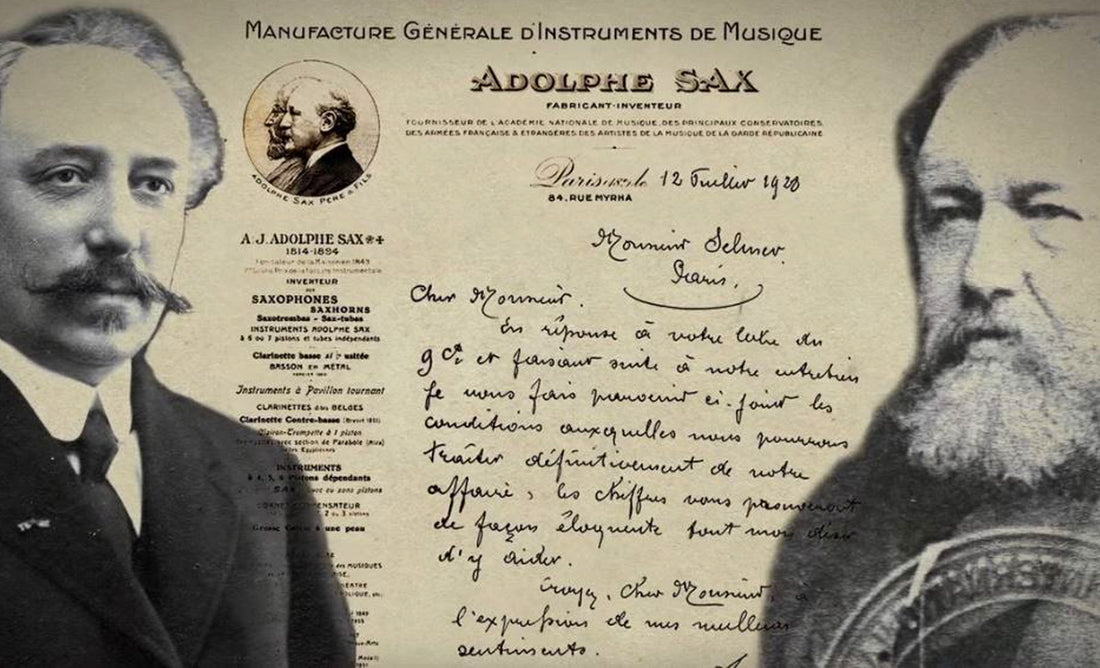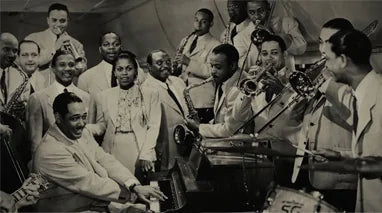Henri SELMER Paris : 135 years of music history & more


After graduating from the Paris Conservatoire in 1878 at the age of 22, Henri Selmer joined the orchestra of the Garde Républicaine. During his career he performed as solo clarinettist with the Lamoureux and Paris Opera orchestras.

At the same time he developed an already well known savoir-faire for refacing mouthpieces and working on reeds. It was in 1885 that Henri Selmer founded the enterprise that began manufacturing reeds and mouthpieces. He set up in Montmartre, at number 4 Dancourt Place, where a creative environment has long attracted artists from all over the world.
At this time Alexandre his younger brother, also a clarinettist, left for the United States, where he would join various orchestras including those of Boston and Philadelphia. He would notably perform under the baton of Gustav Mahler as first clarinettist of the New York Philharmonic (1909-1911).

In 1898 Henri Selmer began the manufacture of his first clarinets and would go on to participate, only 6 years months later, at the Saint Louis World’s Fair in the United States. The acoustic qualities and the perfect manufacture of his clarinets won him a Gold Medal.
This ever-increasing success continued with the opening of a boutique on 86th street in Manhattan, where Henri’s French-made instruments where sold. In 1905 before returning to France, Alexandre would entrust this boutique to one of his best students, George Bundy. This organisation, which is today Conn-Selmer, distributes the Henri Selmer Paris brand throughout the United States and Canada.
In the 1910 catalogue, almost all members of the clarinet family are present and around 20 workers and apprentices make up the manufacturing team.
This expansion would continue and in 1919 the factory in Mantes-la-Ville was inaugurated and Maurice Selmer, Henri’s son, joins the company. The technical direction was undertaken by Maurice and Henri Lefèvre, two of Henri Selmer’s sons in law.

At the time, the saxophone, still a young instrument, would experience an extraordinary popularity in the United States between 1915 and 1930 known as the ‘saxophone craze’. Naturally Selmer Paris was inspired by this and brought out their very first saxophone in 1922. Never before seen improvements were brought to the manufacturing process, notably concerning tone hole pulling; which is a technique still in use today by manufacturers over the world. At this time 50 people were working in the factory producing 30 saxophones a month.
In 1926 the current Henri Selmer Paris logo appeared, with its crown of laurels. It is still engraved on each instrument, mouthpiece and reed, guaranteeing the original ‘Henri Selmer Paris’ brand.

This golden age saw the release of the metal clarinet and a Grand Prix for the Selmer Paris range of instruments at the International Exhibition in Geneva. The range of instruments on offer came to include the entirety of the woodwinds, as one can see in the 1928 catalogue.
In 1929 Henri Selmer purchased the Adolphe Sax workshops, which were also in Montmartre, at 84 rue Myrha. With the integration of this knowledge, expertise and personnel, Selmer became the inheritor and successor to the inventor of the saxophone. The brass family then found itself in the Selmer Paris catalogue.
The company continues to grow. There are now 175 people working to manufacture 300 instruments a month. The reputation of the company is known around the world with 80% of the production exported to Europe, the United States, Asia and South America.

A spirit of diversification will be present in the next 3 years at Henri Selmer Paris.
In 1932 Selmer Paris joined forces with the luthier Mario Maccaferri to produce guitars. Using ingenious concepts and complex fabrication that became renowned, these guitars were produced for 20 years in the Mantes workshops. Django Reinhardt took one as his favourite guitar and made them popular around the world until even today.

A year later the ‘Balanced’ trumpet model with offset valves was brought center stage by none other than the King of Jazz, Louis Armstrong, who would be it’s ambassador. Satchmo played this instrument unconditionally. He sings about it in a recording of ‘Laughin Louie’; “my little Selmer trumpet, bless her little heart…”
Part of the company’s activity was the publication of scores. Maurice Selmer, the son of Henri, directed ‘Editions Selmer’, founded in 1934. After a period of absence, this activity will return in 2015 with a new catalogue.
After the Great Depression in the United States enthusiasm returned little by little and this was felt in the musical world, one such example of a return to form was Benny Goodman’s daily radio program ‘Let’s Dance’.

In the 30's and 40's Big Bands took center stage and the swing era erupted with great energy, represented by Duke Ellington and his saxophonists and clarinettists Ben Webster, John Hodges, Paul Gonsalves and Russell Procope, as well as Count Basie with Lester Young and Jimmy Dorsey whose name was borrowed for a model of saxophone that was manufactured in a very small quantity by Selmer Paris. At this time swing music made up 60% of the recording industry.

When he arrived in Paris on the 30th of March 1934 Coleman Hawkins was given a Selmer Paris tenor saxophone. ‘The Hawk’ fell in love with the saxophone engraved with laurels and stayed true to Selmer from that moment on. His 5-year long tour of Europe was a resounding success and upon his return to the United States he would record a standard with such creativity and audacity that he would come to be known as the father of the tenor saxophone, this track was Body and soul.
These years are particularly associated with one of the greatest icons of jazz, Charlie Parker, to whom Selmer Paris paid homage in 2005 with 5 collections entitled ‘Tribute to Bird’.
In 1936, Henri Lefèvre, son in law of Henri Selmer and director of production revolutionised the modern production of saxophones with the development of the ‘Balanced Action’. The main characteristics included a perfect mechanical equilibrium - unrivalled and still imitated today by saxophone manufacturers around the world - and great progress in intonation and playing comfort.
